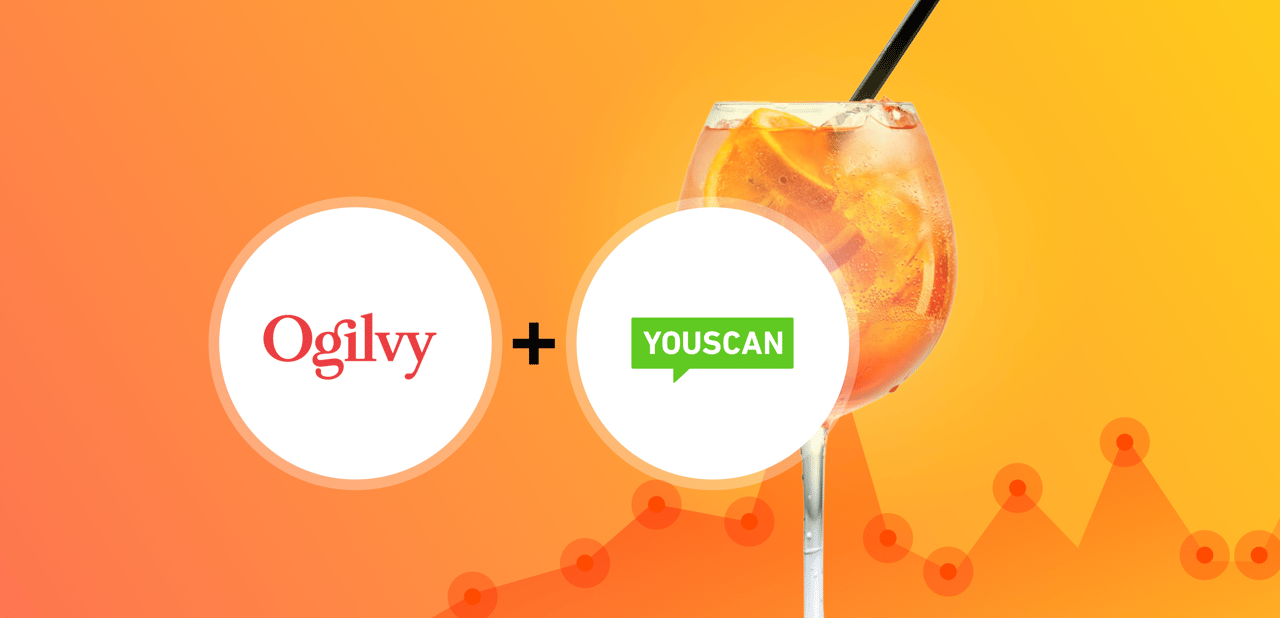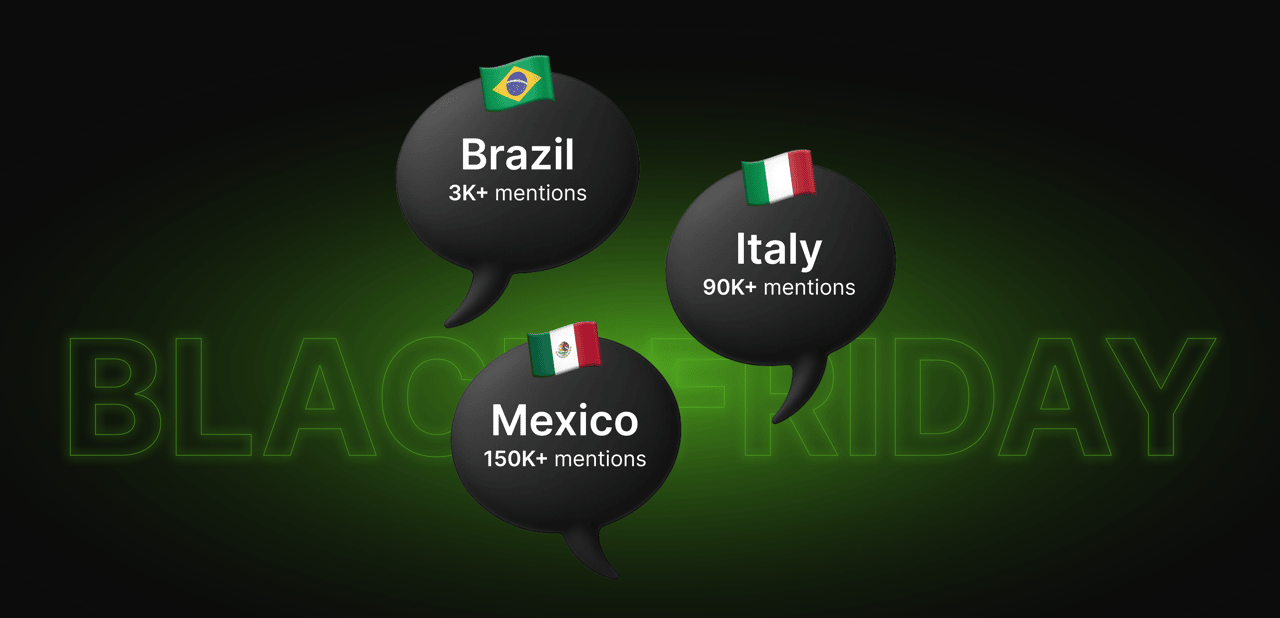Brand Sentiment Analysis: How to Measure and Improve Your Brand's Reputation

Every day, people talk about your brand. They leave reviews, tweet their frustrations, share experiences on Instagram, and discuss your products in various forums. The question is—do you know what they’re saying?
Brand sentiment analysis isn’t just about tracking mentions. It’s about understanding emotions behind the words. Are customers excited about your latest launch? Is there a growing frustration with your service? Could a small issue snowball into a PR disaster?
Ignoring sentiment is risky. A single viral complaint can damage years of reputation-building. But when you listen, you can act. You can fix problems before they escalate, turn happy customers into vocal advocates, and refine your messaging to match what people actually feel, not what you assume they do.
In this article, we’ll break down how brand sentiment analysis works, what tools you need, and how you can actively shape your brand’s reputation before someone else does.
How brand sentiment analysis works
Every brand has a reputation. The only question is—do you know what yours really is?
People don’t just talk about brands; they react to them. A new product launch sparks excitement, a delayed shipment triggers frustration, and a clever ad campaign gets shared with enthusiasm. But not all feedback is obvious. Sometimes, a sarcastic tweet disguises dissatisfaction, or a meme quietly signals a brand’s growing cultural relevance.
This is where brand sentiment analysis steps in. It doesn’t just count mentions—it deciphers emotions behind them.
At its core, sentiment analysis categorizes public perception into three buckets:
Positive – Customers praise your service, recommend your brand, or express excitement.
Neutral – Conversations mention your brand without strong emotions attached.
Negative – Complaints, frustrations, or dissatisfaction with your product or service.
Why does this matter? Because emotions drive decisions. If positive sentiment is climbing, you can amplify what’s working. If negativity is rising, you can step in before it turns into a crisis. And neutral mentions? They often hold untapped potential—an opportunity to engage and shift perception in your favor.
But numbers alone don’t tell the whole story. That’s why sentiment analysis relies on key metrics like:
Sentiment score – A measure of how positive or negative overall brand mentions are.
Engagement rate – How many people interact with sentiment-heavy posts (likes, shares, comments).
Customer satisfaction and sentiment trends – Long-term patterns in how people feel about your brand over time.
This is where AI-powered tools like YouScan take sentiment analysis beyond basic keyword tracking. Unlike traditional methods that struggle with nuance, AI detects:
Context – Distinguishing between “This brand is sick!” (praise) and “I feel sick after using this product” (complaint).
Customer Sentiment– Catching when a “great customer service” comment hides something more behind.
Visual sentiment – Analyzing emotions in images, spotting logos in user-generated content, and identifying the mood behind visuals.
With AI, sentiment analysis doesn’t just skim the surface—it dives deep into the hidden layers of brand perception.
Next, let’s look at the tools that make it all possible.


Tools for Brand Sentiment Analysis
AI-powered sentiment analysis platforms
Imagine trying to listen to every conversation about your brand happening online right now. Impossible, right? With specialized brand sentiment analysis tools such as YouScan, you can keep close tabs on what’s happening in the digital crowd.
These platforms are the detectives of the digital world. They don't just stay on the surface level of the analysis; they delve deep into the context, tone, and nuances of online mentions.
By leveraging advanced natural language processing (NLP), they can discern whether a comment like "Just what I needed!" is genuine praise or dripping with sarcasm. This depth of understanding is crucial because, as we know, not all feedback is straightforward.
Social media monitoring tools
Think of social media monitoring tools as your brand's personal social media managers, tirelessly scanning platforms like Twitter, Facebook, and Instagram for any mention of your name. They track hashtags, keywords, and direct mentions, providing real-time alerts so you can engage promptly. Whether it's a customer raving about your product or voicing a concern, these tools ensure you're in the loop.
Customer feedback analysis software
Beyond social media analytics lie lots of insights in customer reviews, surveys, and support tickets. This software sifts through that data, identifying recurring themes and sentiments.
Did multiple customers mention a particular feature they love? Or is there a common gripe about your latest update? Understanding these patterns allows you to make informed decisions.
Steps to conduct brand sentiment analysis
Understanding how people feel about your brand isn’t just about reading comments—it’s about deciphering patterns, detecting shifts in sentiment, and acting before small issues turn into big problems. Here’s how to conduct brand sentiment analysis step by step.
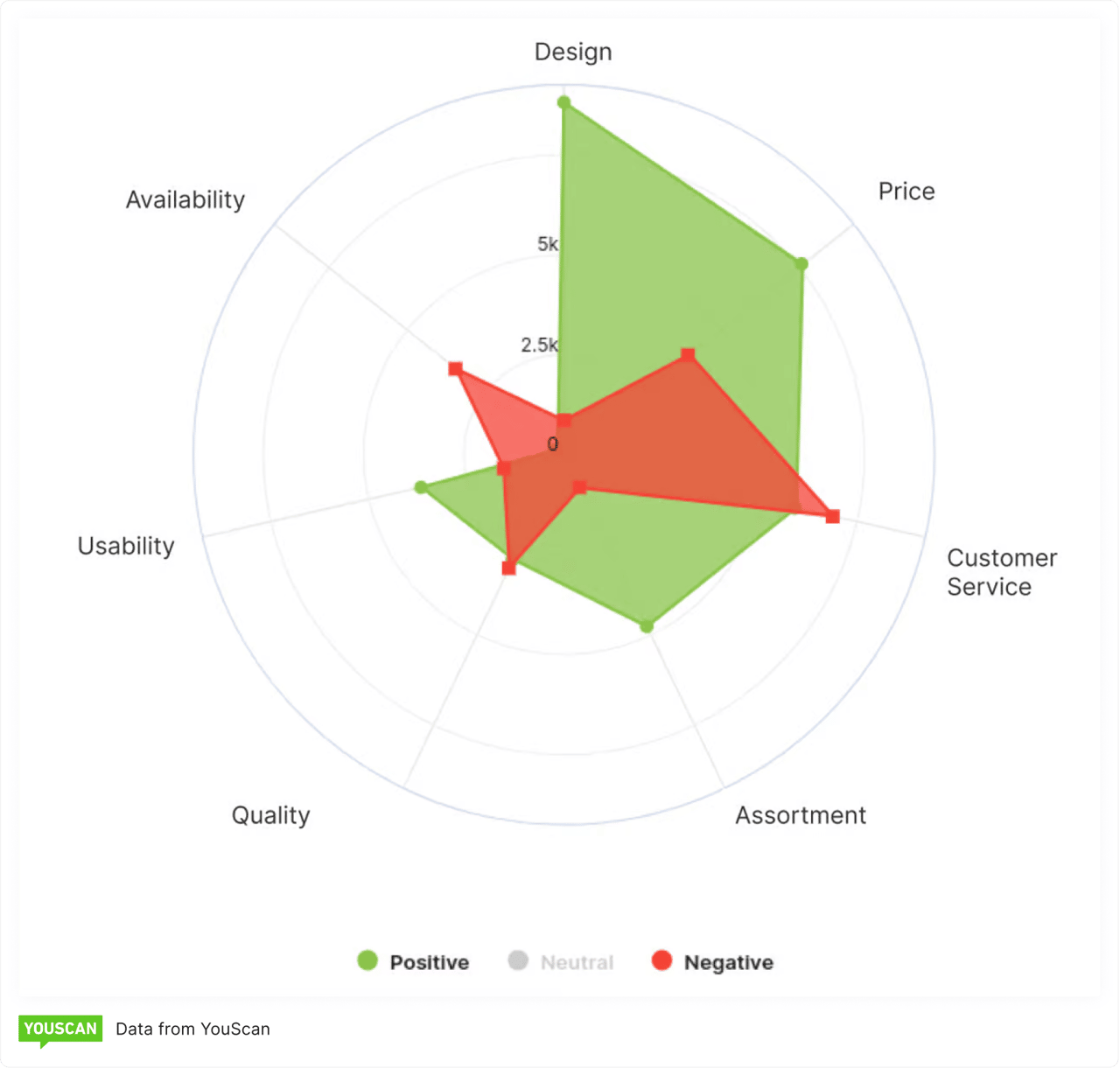

Step 1: Data collection – Gathering sentiment data from multiple sources
Brand sentiment isn’t confined to one place. People express opinions across social media, review platforms, forums, and customer surveys. To get the full picture, brands need to pull data from multiple sources.
Where to collect sentiment data:
Social media platforms – Twitter, Instagram, Facebook, LinkedIn, and TikTok are where conversations unfold in real time. Monitoring hashtags, brand mentions, and comments reveals how people feel about your brand.
Online reviews – Sites like Trustpilot, Google Reviews, and Yelp offer unfiltered customer opinions that influence public perception.
Forums & discussion boards – Reddit and Quora often hold raw, detailed feedback from engaged users discussing their experiences.
Customer surveys – Direct customer feedback through NPS (Net Promoter Score) and CSAT (Customer Satisfaction Score) surveys provides sentiment data straight from your audience.
Manual vs. AI-powered data collection:
Manual monitoring is slow, inconsistent, and nearly impossible to scale.
AI-powered tools like YouScan collect millions of mentions across platforms in real-time, eliminating blind spots and ensuring no conversation goes unnoticed.
Step 2: AI-powered sentiment classification – Analyzing the emotions behind the data
Once you have the data, the next step is sorting and understanding it. Sentiment analysis tools use Natural Language Processing (NLP) and machine learning to categorize sentiment into three main types – positive sentiment, neutral sentiment, and negative sentiment:
Positive – Happy customers, glowing reviews, or enthusiastic brand mentions.
Neutral – Mentions that don’t express strong emotion but still contain valuable insights.
Negative – Complaints, frustrations, or PR risks that need immediate attention.
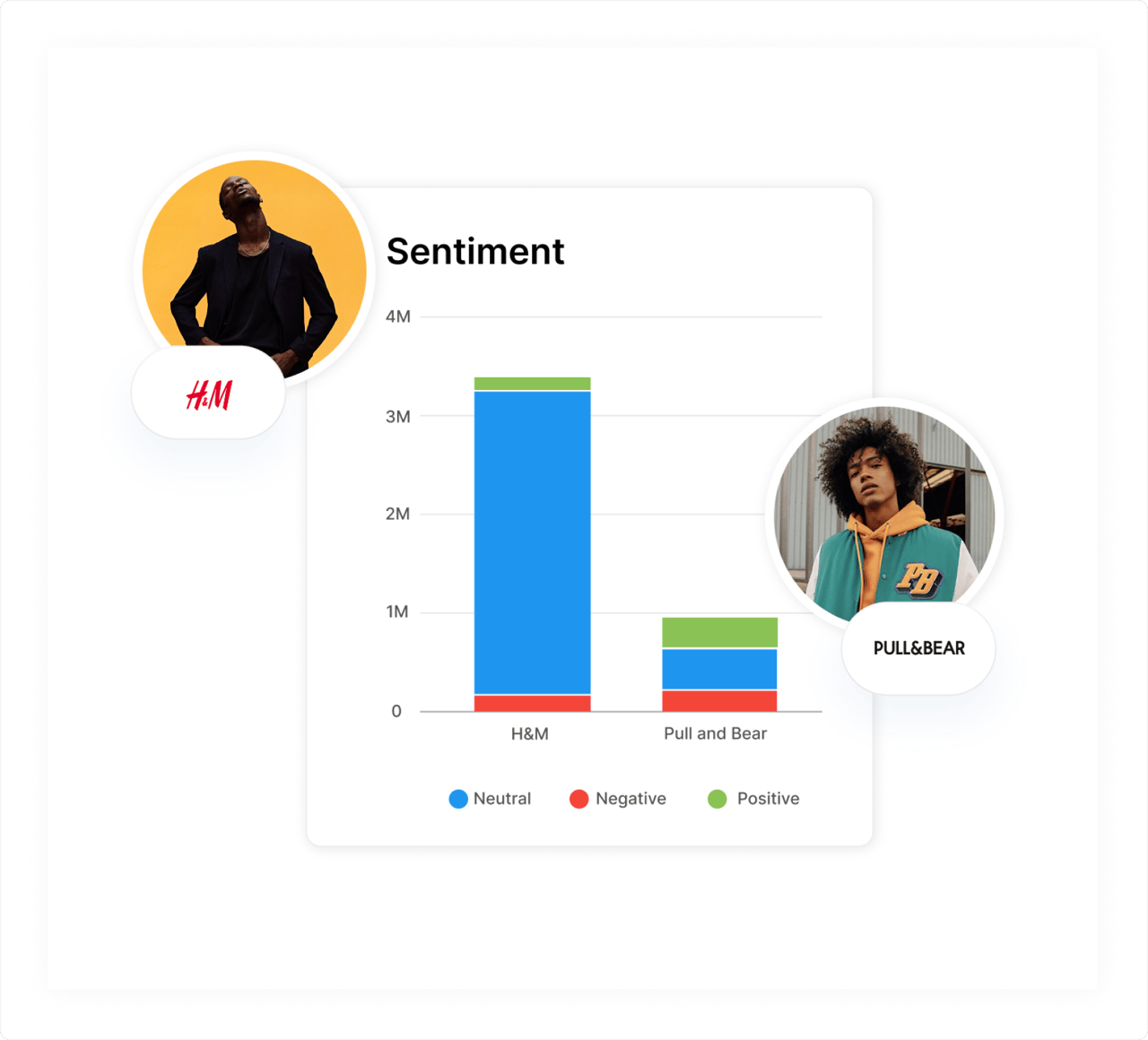

Traditional sentiment analysis struggles with context and mixed emotions. AI-driven tools like YouScan go beyond text analysis by incorporating:
Context awareness – Detects when words like “amazing” or “love” are anything but genuine praise.
Emoji & slang interpretation – Understands informal language and emotional cues in modern communication.
Image recognition – Analyzes visual sentiment by identifying emotions in images, brand logos in user-generated content, and how people visually engage with your brand.
Example: A restaurant might receive a tweet saying, “Great, another night ruined by slow service 🙄”. A basic tool may classify it as positive because of the word "great," but AI-powered sentiment analysis by YouScan correctly identifies genuine frustration.
Step 3: Interpreting sentiment trends – Tracking changes over time
Analyzing a single moment in sentiment doesn’t tell the full story. Brands need to track trends over time to spot patterns, risks, and opportunities.
What to look for in sentiment trends:
Increasing positive sentiment – Indicates successful campaigns, improved customer experience, or growing brand loyalty.
Spikes in negative sentiment – Could signal a product issue, service failure, or brewing PR crisis.
Sudden shifts in neutral sentiment – Often means customers are disengaging, which can be an early warning sign of lost brand relevance.
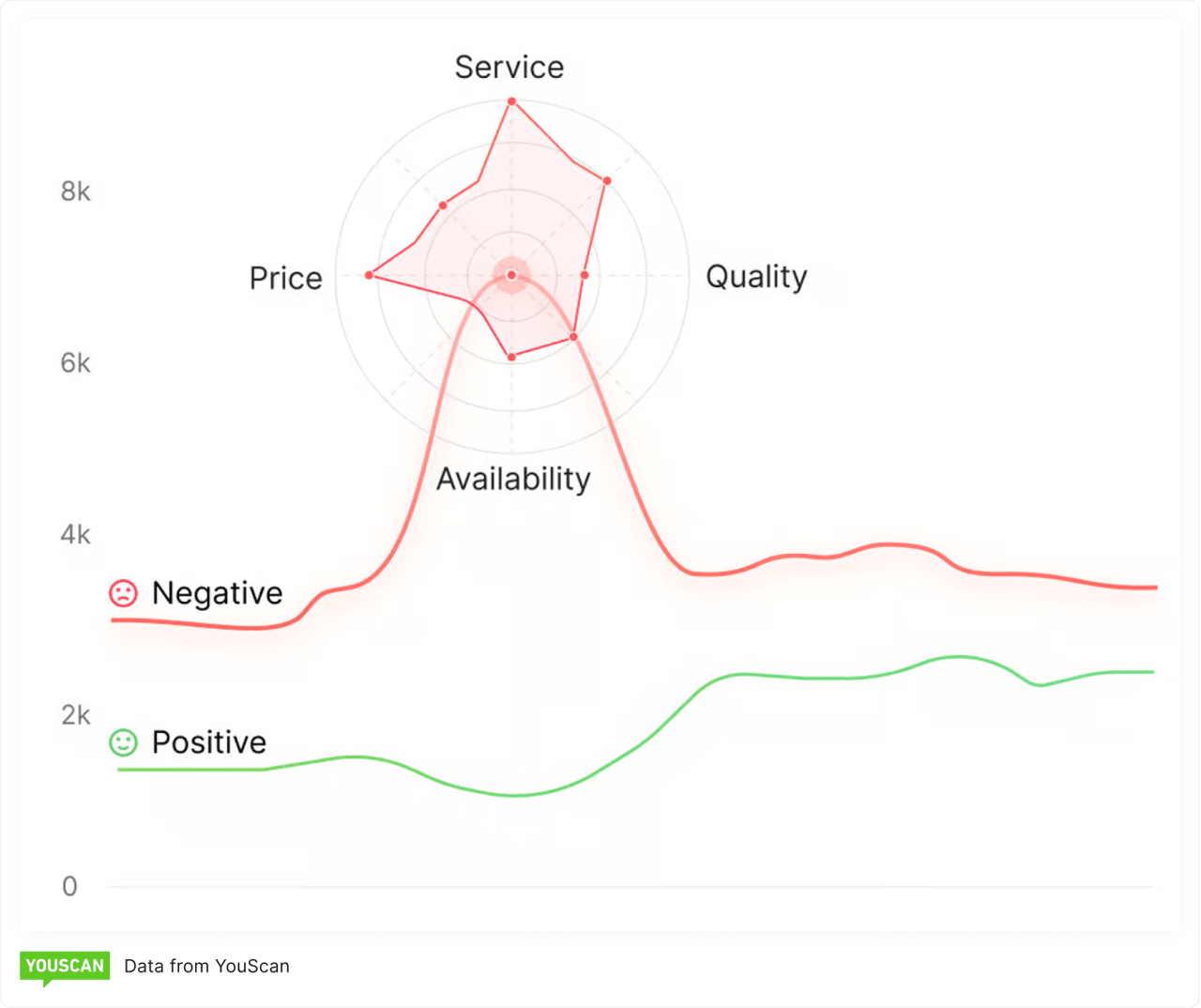

How to track and act on sentiment trends:
Compare sentiment over time – Use trend analysis to measure changes after product launches, campaigns, or events.
Set real-time alerts – AI-powered tools notify you if negative mentions spike, allowing you to respond before issues escalate.
Identify root causes – Break down negative sentiment by topic (e.g., product defects vs. customer service complaints) to pinpoint exactly what needs fixing.
For example, a fashion brand might see negative sentiment rise after launching a new clothing line. AI analysis reveals that customers dislike the fabric quality, allowing the brand to adjust production before sales plummet.
How to improve brand sentiment
Tracking brand sentiment is just the first step—what matters most is what you do with that information. Whether sentiment is trending negatively or positively, you have the power to shape public perception through strategic actions.
Here’s how to measure brand sentiment, proactively improve brand sentiment, and strengthen your reputation when using social listening tools.
1. Address negative feedback before it becomes a crisis
Bad reviews, social media complaints, and frustrated customers are inevitable. The key difference between brands that lose trust and those that recover stronger is how they handle criticism.
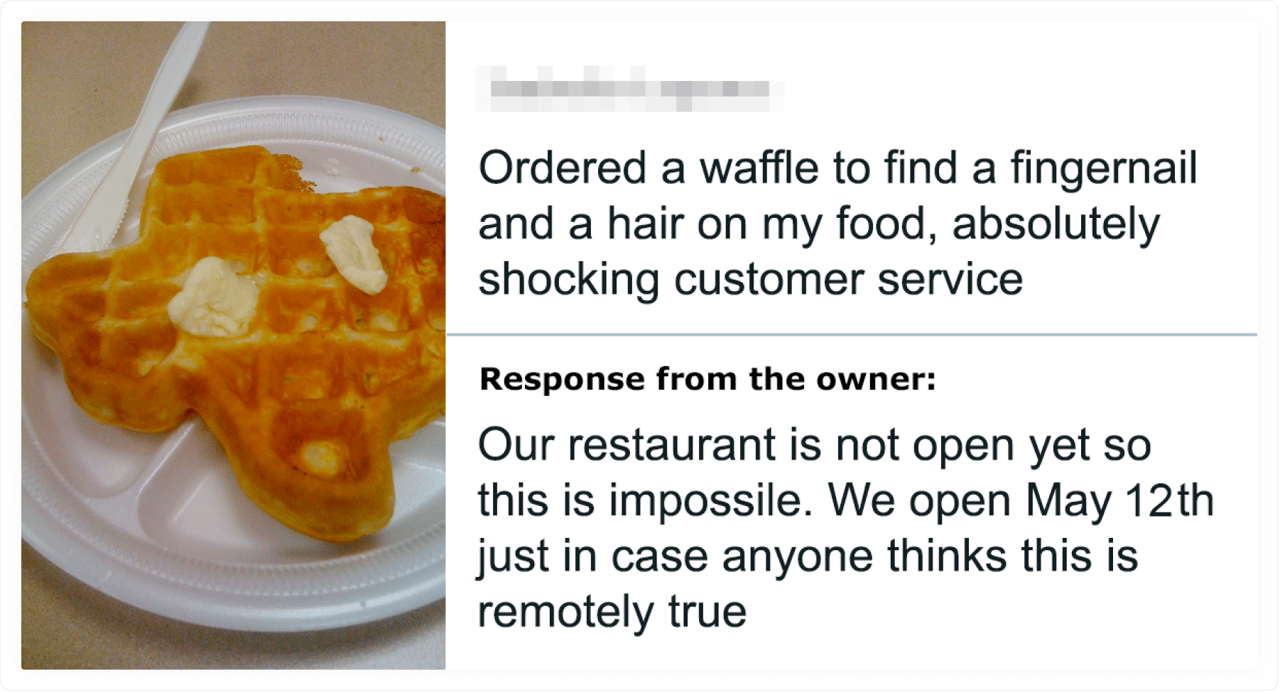

Image source: BoredPanda
How to turn negative sentiment around:
Acknowledge the issue publicly – Ignoring complaints makes them louder. A simple, “We hear you, and we’re working on it”, can prevent backlash.
Respond quickly – Speed matters. A study found that 79% of customers expect brands to reply on social media within 24 hours.
Take the conversation private – Move complaints to DMs or customer support channels to resolve issues effectively without public escalation.
Offer solutions, not excuses – Instead of just apologizing, explain what you’re doing to fix the problem and follow through.
Let's take a tech brand as an example – it releases an update, and customers flood Twitter with complaints about buggy software. Instead of staying silent, they acknowledge the issue, update customers on a timeline for fixes, and even offer temporary solutions. This transparency turns frustration into trust.
2. Improve customer experience through meaningful engagement
If customers feel unheard, sentiment will never improve. Brands that actively engage with their audience build stronger relationships, higher loyalty, and better perception.
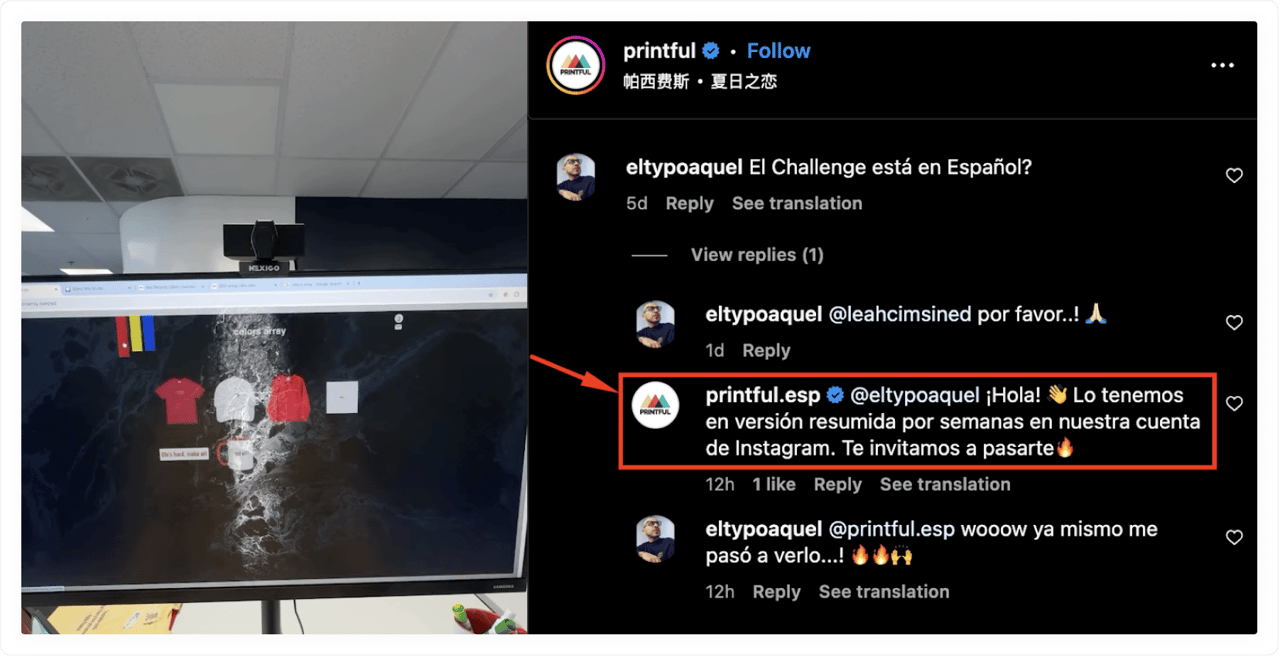

Image Source: Instagram
How to engage customers the right way:
Personalize interactions – Use a customer’s name when responding on social media or email. It shows they’re not just a ticket number.
Surprise and delight – Offer unexpected perks (discounts, exclusive previews, personalized thank-you notes) to customers who engage positively.
Encourage conversations – Ask for customer opinions, run interactive polls, and respond to comments to make people feel valued.
Engage beyond complaints – Don’t just reply when customers are upset—celebrate positive mentions too.
3. Turn happy customers into brand advocates
Satisfied customers are your most powerful marketing tool. When people share authentic, positive experiences, they influence others far more than ads ever could.
How to leverage brand advocacy:
Feature user-generated content – Share customer testimonials, reviews, and social media posts that highlight genuine love for your brand.
Create an exclusive community – Reward loyal customers with VIP perks, early product access, or referral bonuses.
Give them a reason to talk – Launch fun, shareable campaigns, challenges, or contests that encourage customers to spread the word.
Recognize and reward top advocates – Shout out your most loyal fans on social media, offer them special discounts, or invite them to exclusive events.
For example, YouScan has developed a powerful social listening tool to identify trending positive sentiment and top brand advocates, so businesses can nurture relationships with their most influential customers.
How brands use sentiment analysis effectively
Brands that actively monitor sentiment don’t just react to conversations—they shape them. By understanding how customers feel in real time, companies can fine-tune their messaging, prevent PR crises, and amplify what’s working. Some of the world’s biggest brands have seen the impact of sentiment analysis firsthand.
Take L’Oréal, for example. With a vast global audience, keeping track of how people talk about their products online is no small task. By leveraging social listening, they were able to identify consumer concerns, track trends in sentiment, and adjust their communication strategy to build stronger connections with their audience. Instead of guessing what customers wanted, they responded based on real insights.


For Coca-Cola, the challenge was understanding how their brand was perceived across different regions and demographics. With AI-driven sentiment analysis, they analyzed vast amounts of social media data to spot trends, measure emotional responses to campaigns, and adjust their marketing efforts accordingly. This approach allowed them to fine-tune messaging for different audiences and stay ahead of potential reputation risks.
Meanwhile, companies like Publicis took sentiment analysis beyond text, diving into visual listening to understand brand perception in images and videos. By detecting how and where their brand appeared in user-generated content, they gained a new layer of consumer insight that traditional methods would have missed.
It’s not just about global corporations, either. Brands like AeroCool used sentiment tracking to engage with influencers, improving relationships and increasing brand advocacy.
From detecting potential PR crises to refining customer engagement strategies, sentiment analysis gives brands the power to turn public perception into a competitive advantage. And with AI-driven tools like YouScan, companies don’t just track sentiment—they act on it before it defines their reputation.
Conclusion
Brand sentiment isn’t just a metric—it’s the pulse of how people perceive your business. The brands that thrive aren’t the ones that just listen; they’re the ones that understand, adapt, and act before sentiment defines their reputation.
Whether it’s addressing negative feedback before it spirals, engaging with customers in meaningful ways, or amplifying brand advocates, sentiment analysis gives businesses the power to shape the conversation rather than chase it.
AI-powered tools like YouScan take sentiment analysis beyond basic brand monitoring. With real-time tracking, deep consumer insights, and even visual sentiment detection, YouScan helps brands see the full picture—not just in words, but in emotions, images, and trends that truly impact perception.
Your reputation is being shaped with or without you. The question is—are you listening? See how YouScan can help you take control of your brand sentiment. Book a demo with us today.
FAQs
What is brand sentiment analysis?
Brand sentiment analysis is the process of analyzing customer opinions, emotions, and attitudes toward a brand based on social media, reviews, and online conversations.
What are the three stages of sentiment analysis?
The three main stages are data collection (gathering mentions from social media, reviews, and forums), sentiment classification (using AI to categorize mentions as positive, neutral, or negative), and trend interpretation (analyzing sentiment shifts to identify emerging trends, risks, and opportunities).
What are sentiment analysis examples?
Examples include tracking customer reactions to a product launch, identifying rising complaints about customer service, and measuring public sentiment after a marketing campaign.
What is brand perception sentiment analysis?
Brand perception sentiment analysis evaluates how people feel about a brand over time, helping businesses understand their reputation, detect trends, and improve their public image.


